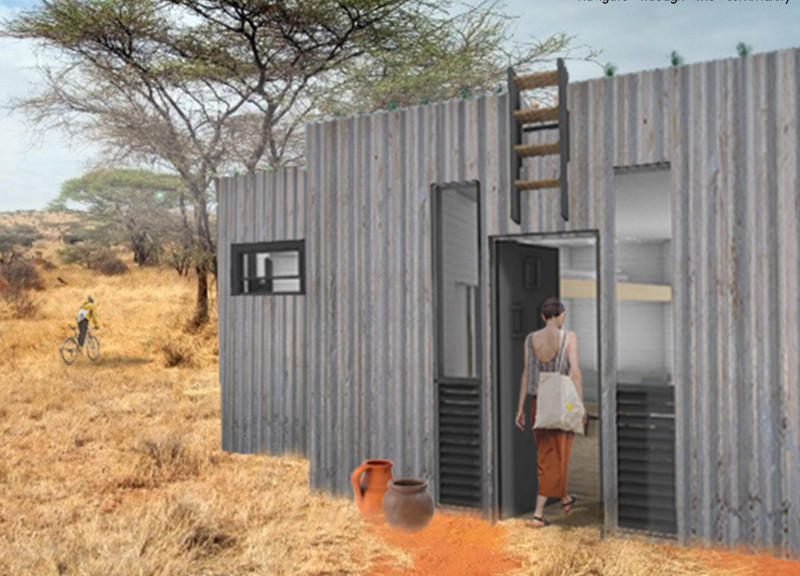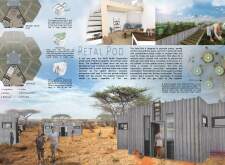5 key facts about this project
The Petal Pod project addresses the challenges of urban living in marginalized communities. It focuses on providing solutions that are both innovative and practical. Located in areas where populations are growing quickly, the design promotes micro-housing and communal resources. The concept aims to enhance the quality of life for residents through thoughtful and sustainable strategies.
Water Management
An effective approach to water management is central to the design. Each pod has an increased surface area that allows for rainwater harvesting. This method ensures that significant amounts of rainwater can be collected, which is vital in regions facing water scarcity. The layout consists of six pods surrounding a shared cistern that provides potable water, encouraging efficiency and resource sharing among residents.
Living and Agricultural Spaces
Each pod is designed to fit into a space of around 24 square meters, creating efficient living areas that include a kitchen, bathroom, and a communal living space. Green roofs are an important feature, as they facilitate urban farming, giving residents the chance to grow their own food. This feature supports self-sufficiency and aims to make food production more accessible. The installation of decomposable toilets also reduces water usage while contributing organic fertilizer for the crops.
Ventilation and Natural Light
Ventilation and natural light play crucial roles in the overall comfort of the pods. Cross ventilation is implemented through the use of louvers and skylight vents, promoting airflow and maintaining a pleasant indoor climate. Windows are positioned strategically to maximize daylight, creating a bright and cheerful atmosphere in the compact living spaces.
Material Selection and Construction
Sustainability is a key aspect of the construction process as well. Recycled steel and wood are selected as materials, reinforcing the commitment to environmentally responsible building practices. The use of prefabricated panels allows for quicker assembly, which is essential in providing timely housing solutions for urban populations. These materials help minimize the environmental impact of the project.
The circular layout of the pods encourages a sense of community and social interaction among residents. This design fosters connections, making it possible for people to live closely while also enjoying privacy in their individual spaces.



















































